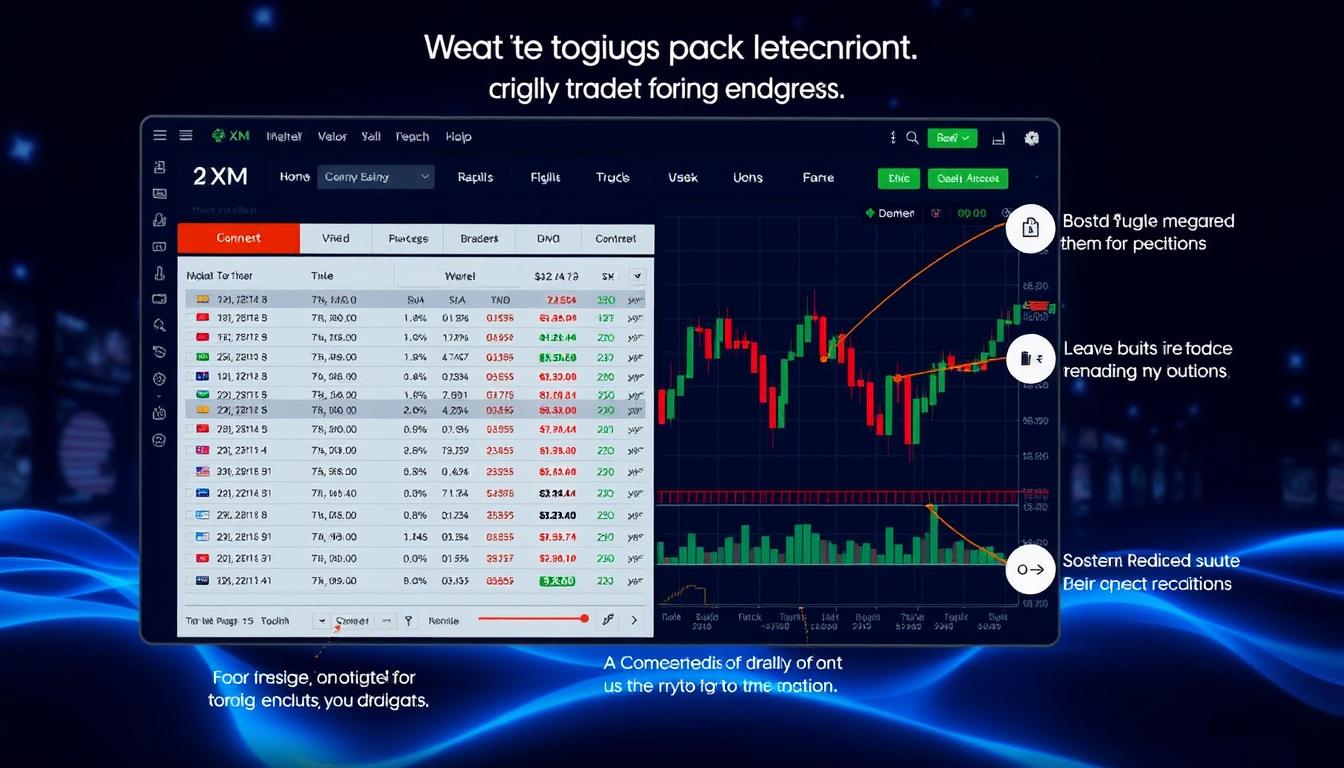The traditional path to financial independence was often paved with long hours, limited control, and a hefty dose of uncertainty. But for many traders, the landscape has changed dramatically. With the emergence of instant funding prop firms, talented individuals can now access substantial trading capital, often ranging from $25,000 to $200,000 or more, to fuel their journey to financial freedom.
By leveraging modern trading tools and strategies, these individuals are breaking free from the constraints of conventional employment and forging their own path to financial independence. This shift has democratized access to the financial markets, allowing ordinary people to generate income and build wealth on their own terms.
Key Takeaways
- Discover how traders are achieving financial independence at an accelerated pace.
- Learn about the fundamental differences between traditional employment and trading.
- Understand how modern trading opportunities have democratized access to financial markets.
- Explore real-life examples of individuals who have successfully transitioned to independent trading.
- Uncover why trading has become a viable path to financial freedom in today’s economy.
The 9-5 Trap vs. The Trader’s Escape Route
For those trapped in the 9-to-5 grind, trading represents a liberating alternative that puts financial destiny in their hands. The traditional employment structure, while providing a stable income, inherently limits financial growth and freedom.
Why Traditional Employment Limits Your Freedom
Traditional employment comes with an income cap, directly tied to the salary scale or the annual bonus structure set by the employer. This setup restricts an individual’s potential income based on the company’s performance rather than their personal effort or skill level. Moreover, the progression in a traditional career is often slow and subject to various factors beyond an individual’s control, such as company policies, economic conditions, and managerial discretion.
| Aspect | Traditional Employment | Trading |
|---|---|---|
| Income Potential | Capped by salary and bonuses | Uncapped, directly tied to skill and effort |
| Career Progression | Slow, dependent on company performance and policies | Rapid, based on individual skill development and market knowledge |
| Financial Freedom | Limited by the corporate structure | Achievable through successful trading strategies |
The Trading Alternative: Uncapped Potential
Trading offers a stark contrast to the limitations of traditional employment by providing uncapped earning potential. Traders can scale their operations as their skills improve, potentially multiplying their income without the constraints of corporate approval or traditional promotion paths. By mastering the right trading strategies and risk management, individuals can achieve financial freedom in a fraction of the time it takes through conventional career advancement.
Successful traders directly benefit from their skill development and market knowledge, creating a more direct relationship between expertise and financial rewards. This direct correlation empowers traders to achieve a financial future that is more secure and prosperous.
Understanding the Trader Life and Financial Edge
Trading isn’t just about making money; it’s about creating a lifestyle that values independence and autonomy. At its core, the trader’s life is about achieving financial independence through a strategic approach to managing money and time.
Financial discipline is key to this lifestyle. It’s not just about saving or cutting expenses, but about making conscious decisions that prioritize long-term freedom over short-term gains. When traders master this skill, they fundamentally change their relationship with work and life.
What Sets Successful Traders Apart
Successful traders have a distinct mindset that sets them apart. They prioritize freedom in their decision-making, focusing on how their choices will impact their long-term autonomy and financial independence.
A key characteristic of successful traders is their ability to balance short-term sacrifices against long-term freedom gains. This involves making strategic decisions that may require short-term patience but ultimately accelerate their path to financial independence.
| Trader Characteristics | Conventional Investors | Successful Traders |
|---|---|---|
| Primary Focus | Short-term gains | Long-term freedom |
| Risk Management | Reactive | Proactive |
| Decision Making | Emotion-driven | Strategic |
The Freedom-First Mindset
Adopting a freedom-first mindset influences every aspect of a trader’s life, from daily routines to long-term financial planning. It’s about creating a lifestyle that emphasizes autonomy and choice.
Traders with this mindset understand that their approach to trading is not just about making money, but about creating a path to financial independence. They make decisions that support their long-term goals, even if it means making short-term sacrifices.
Instant Funding: The Modern Trader’s Shortcut
Prop firms have revolutionized the trading landscape by offering instant funding, a game-changer for aspiring traders. This development has significantly altered the traditional path to becoming a successful trader, making it more accessible and faster.
How Prop Firms Have Revolutionized Trading Careers
Proprietary trading firms have transformed the way traders access capital, providing instant funding that enables them to start trading with real money sooner. This shift has opened up new opportunities for traders who previously struggled to secure funding.
1-Step vs. 2-Step Funding Programs
Modern prop firms typically offer two paths to funding: 1-step and 2-step programs. The 1-step program is designed for experienced traders who want immediate access to a funded trading account. These programs often come with higher initial costs but provide instant access to live trading and real profits. On the other hand, the 2-step program requires more time to complete but comes with lower entry costs and provides a more structured path to funding your trading endeavors.
The choice between these programs depends on the trader’s experience, risk tolerance, and financial goals. For instance, a seasoned trader might opt for the 1-step program to leverage their expertise and start trading with a funded account immediately. In contrast, a less experienced trader might prefer the 2-step program for its structured approach and lower initial costs.
Understanding the specifics of each program, including performance metrics, risk management requirements, and typical account sizes, is crucial for making an informed decision. By choosing the right program, traders can maximize their potential for success and achieve their trading goals more efficiently.
Selecting Your Path to Trading Freedom
With numerous trading options available, traders must carefully evaluate their choices to maximize success in the financial markets.
When it comes to prop firm offerings, the evaluation process involves assessing the trading platforms provided, such as MT4 and MT5, which offer flexibility and a range of tools for effective risk management and strategy execution.
Evaluating Prop Firm Offerings
Evaluating prop firm offerings is crucial. It involves looking at the trading environment they provide, ensuring it’s professional and conducive to executing your strategies without technical hitches.
Matching Programs to Your Trading Style
Different trading approaches, such as day trading, swing trading, or position trading, require different evaluation models and rule structures from prop firms. Matching your approach to the right program is key.
By aligning your trading style with the appropriate prop firm program, you enhance your potential for success and maintain your unique trading identity.
Mastering Risk Management: The Freedom Accelerator
To achieve trading freedom, mastering risk management is crucial. Understanding and adapting to a prop firm’s trading rules isn’t just about compliance; it’s about developing sustainable habits that can transform you into a professional funded trader.
Essential Risk Parameters for Sustainable Trading
Developing a complete trading system that incorporates risk management at every level is vital. This includes:
- Setting clear entry criteria that prioritize capital preservation
- Implementing position sizing strategies to manage exposure
- Using stop-loss orders to limit potential losses
- Employing profit-taking techniques to secure gains
These strategies form the backbone of a risk-conscious trading plan.
Building a Risk-Conscious Trading System
To build a robust trading system, traders should leverage technology and risk management tools to automate risk controls. This reduces emotional decision-making during volatile market conditions. Testing and validating your risk management approach using historical data and small live positions helps refine your system before scaling up. Regularly documenting and reviewing risk management rules ensures your system evolves with your trading experience and changing market conditions.
The Financial Discipline of Escape 9-5 Traders
Achieving financial independence through trading requires more than just market knowledge; it demands financial discipline. Traders who successfully escape the 9-to-5 grind understand the importance of managing their finances effectively to maintain their trading lifestyle.
High Savings Rate Strategies
Traders who achieve financial independence often have a high savings rate, which enables them to accumulate capital for trading. This involves adopting strategies such as living below one’s means, avoiding unnecessary expenses, and allocating a significant portion of income towards savings and investments.
- Implementing a budgeting plan that accounts for all expenses and income.
- Avoiding lifestyle inflation by directing excess funds towards savings.
- Utilizing tax-advantaged savings vehicles such as retirement accounts.
Strategic Debt Management for Traders
Strategic debt management is crucial for traders aiming to achieve financial independence. Not all debt is created equal; while mortgages on reasonably-priced homes or student loans for high-return degrees can be considered good debt, consumer debt and auto loans can significantly hinder wealth accumulation.
Traders should focus on eliminating high-interest debt quickly and making strategic borrowing decisions that support their trading career. This includes:
- Prioritizing debt repayment based on interest rates and urgency.
- Maintaining a healthy credit profile to minimize interest expenses.
- Avoiding common debt traps such as credit card debt and payday loans.
Transitioning From Employee to Independent Trader
Embracing the trader lifestyle means not only developing a robust trading plan but also ensuring financial stability through multiple income sources. As traders transition from being employees to becoming independent, they face the challenge of maintaining financial stability without a regular paycheck.
The Part-Time Trader Approach
Many successful traders start by adopting a part-time trading approach. This involves trading while still being employed, allowing them to test their strategies and build confidence in their trading decisions.
Creating Multiple Income Streams
Creating multiple income streams is crucial for achieving financial independence. Traders can diversify their income by investing in passive investments, offering related services, and engaging in strategic part-time work, thus reducing the risk associated with relying solely on trading income.
| Income Stream | Description | Benefits |
|---|---|---|
| Passive Investments | Investing in dividend-paying stocks or real estate | Stable income, reduced reliance on trading |
| Related Services | Offering education or analysis services | Leverages trading expertise, additional income |
| Part-Time Work | Engaging in strategic part-time work | Financial stability, diverse skill set |
By adopting a part-time trading approach and creating multiple income streams, traders can ensure a smoother transition to becoming independent traders, achieving financial independence in a relatively short period, typically within a few months.
Conclusion: Your Trading Freedom Blueprint
The potential for trading to transform your financial future is undeniable, and now is the time to seize it. Over the years, traders have achieved financial independence by leveraging the right strategies and mindset. To break free from the 9-5 grind, you must take action and start your journey today. By doing so, you’ll be on the path to achieving the freedom you’ve always dreamed of. It will take dedication and perseverance over the years to come, but the first step is simple: start learning and begin your transition to a life of financial independence through trading. Take the first step today and turn your dream into a reality.





